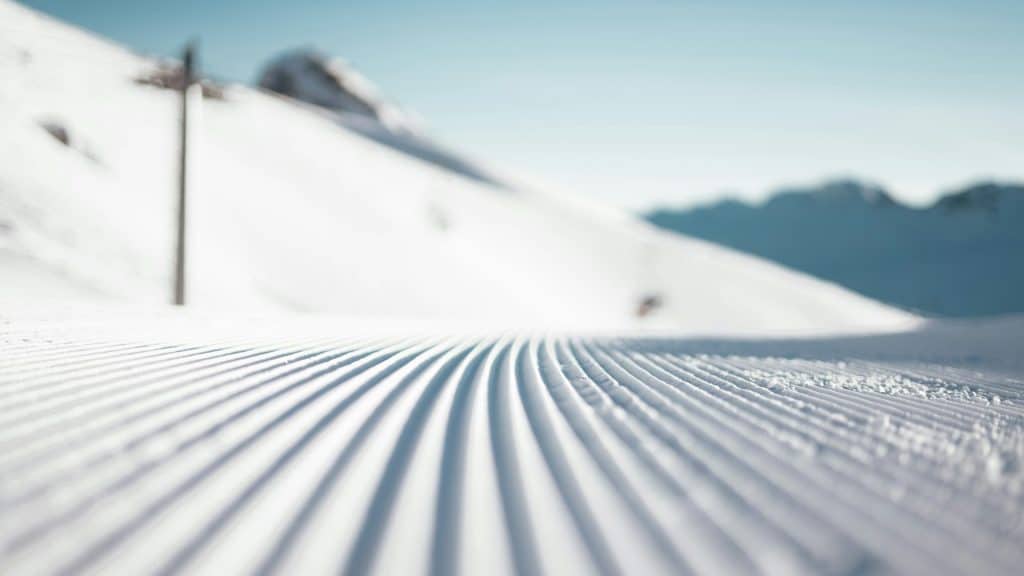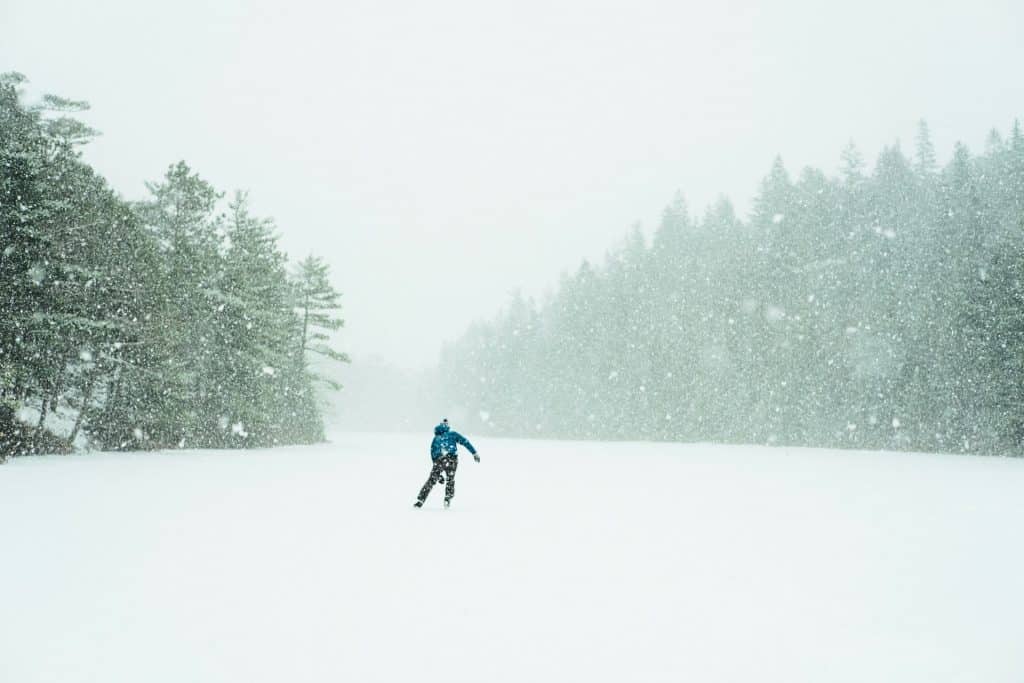Still love skiing but feel it in your knees a bit more these days? You’re not alone.
This one’s for the older skiers. The ones who’ve been at it for decades, who still wake up early for fresh snow, but who maybe take a bit longer to warm up than they used to.
Maybe you’ve had a few crashes, maybe you just don’t bounce back like you did in your thirties. Doesn’t mean you’re done. It just means you need to ski a little smarter.
Whether you’re still charging or just getting back into it after a few years off, here’s how to keep skiing better, safer and longer.
Modern Gear Makes a Huge Difference
Start with the Right Tools
If your gear is older than your grandkids, it’s time for an upgrade. Ski technology has come a long way, and newer gear is built to be lighter, more stable, and far more forgiving than what you probably learned on.
Old boots break down. Skis lose their camber. Bindings stop doing what they’re supposed to. You don’t have to buy the most expensive setup out there, but modern gear can take a load off your body and make skiing easier (and safer).

Smart move: If you’re replacing just one thing, start with boots. A good boot fitter can customize them to your feet, giving you more control and comfort from your very first run. That alone can change your whole day.
Don’t Forget the Little Things
If you’re walking between the lodge and the lift in just your ski boots, grab yourself a pair of boot sole protectors. They’re cheap, they grip icy walkways better, and they’ll keep you from slipping before you even make it to the snow.
Quick tip: Don’t walk long distances in ski boots unless you have to. Use covers if you’re trudging across the car park or lodge deck. Your ankles will thank you.
Ski Smarter, Not Harder
Avoid the Chaos Zones
Some runs just aren’t worth it anymore. Those busy connector slopes that funnel everyone back to the base? Packed. Icy. Unpredictable. Especially in the late afternoon when the light’s flat and people are tired.

Best move? Either get down earlier or skip that last run entirely. Plenty of instructors (and smarter locals) take the gondola down. No shame in that.
Top tip: The last run of the day is when most injuries happen. Ending on a high note means living to ski another one.
Choose Terrain That Works for You
You don’t have to prove anything. If you hate moguls or feel sketchy on steeps, avoid them. Flat zones can be just as tough if your momentum drops. Know the mountain, plan your routes, and don’t let ego override comfort.
If you’re at a new resort or haven’t skied in a while, booking a private lesson can help dial in your technique and give you confidence to ski the stuff you enjoy most.
Helpful gear alert: Crash pants are an awesome addition for skiers of any age. Swallow your pride and pad up!
Weather Tricks That Actually Work
Ride Low When the Light’s Flat
Ever felt like you’re skiing blind? Whiteout days can turn even gentle runs into a guessing game. But here’s a simple fix: ski where the trees are. Tree-lined trails give contrast and depth perception, so you’re not just hoping there’s still snow under you.
Goggle swap: On low-vis days, switch to yellow or rose lenses. They make shapes and terrain pop better than dark mirrored ones. Keep a spare lens or cheap backup pair in your bag.
Visibility trick: Orange tips on piste markers always mark the right side of the trail. If things go foggy and you’re not sure where you are, stay to the left of those markers and you’ll stay on track.

Stay Strong, Ski Longer
Warm Up First, Every Time
Ten minutes of movement before clicking in can make a huge difference. A few leg swings, gentle lunges, shoulder circles — nothing fancy, just something to wake up the joints. Especially if you’ve been sitting on a cold chairlift or sipping coffee since sunrise.
Warm-up tip: You don’t need to stretch like a yoga teacher. Just move around enough to get your blood going.
Keep Drinking Water
You might not feel thirsty on a cold day, but dehydration creeps up and can wreck your energy and focus. Bring a small bottle or grab water every time you stop at the lodge.
Bonus: Most cafés will refill your bottle for free. Just ask.
Pace Yourself
Forget the old ‘first chair to last call’ badge of honor. Take breaks. Listen to your body. Sit in the sun. Warm up with a coffee or hot chocolate and give your legs time to recover between runs.
Pro tip: Getting cold during a break? Layer up and walk around before dropping in again. Stiff legs make skiing harder (and riskier).
Safety in Numbers
Ski with Friends (or at Least Let Someone Know)
You don’t need a whole crew, but skiing with at least one other person is always a smart move. Not just for safety, but for fun, encouragement, and the occasional shared laugh after a sketchy run.
Solo skier? Make sure someone knows your plan for the day. Drop a pin, share your lunch spot, or text when you’re off the mountain. It takes five seconds and could save hours of worry.
Golden Rule: Always ski at the pace of the slowest person in your group. No one wants to feel rushed, especially when visibility’s low or legs are fading.

That Last Run Isn’t Worth It
Seriously, Skip It
There’s something about the “last run” that always feels tempting, even when your legs are cooked and the light’s fading. But here’s the thing, most injuries happen late in the day, on tired legs, on crowded connector runs.
Better move: End your day with a hot drink and a ride down on the gondola. You’ll be warmer, safer, and still smiling when you get back to the lodge.
Alternative move: Treat your last real run as your second-to-last, then take a mellow lap to finish. That way you’re never ending the day under pressure.
Lessons Aren’t Just for Beginners
Yes, Even Now
Think you’re “too good” for ski school? That mindset’s holding you back. A single private lesson can fix nagging habits, reduce the strain on your body and make skiing feel smooth again.
Bonus: Many resorts offer senior-specific clinics or instructors trained to work with older skiers. They get it and they’ll tailor the session to your body, not just your technique.
Confidence booster: Even if you’ve been skiing forever, there’s always something new to learn or sharpen up. And a fresh set of eyes might be the difference between coasting and progressing.
Final Thoughts
You don’t have to ski like you’re 25 to ski like a legend. The goal now isn’t to be the fastest on the mountain – it’s to be the one still skiing when everyone else has hung up their boots.
That means skiing smart. Listening to your body. Upgrading your gear. Choosing your routes with intention. And yeah, maybe skipping that last “one more run” when your gut says no.
Because here’s the truth: skiing at 65, 70, or 80 isn’t just possible. It’s epic. You’ve got experience, mountain wisdom, and the right to ski exactly how you want.
So take care of yourself, ski with joy, and keep chasing those perfect turns. You’ve earned them.
